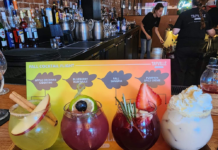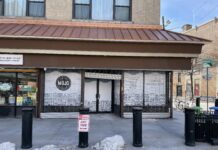Earlier this month, Jersey Digs brought you a look at the history behind some of the most notable ‘ghost signs’ in Newark. These signs, many of which date back several decades some more than a century, are symbols of businesses and brands that were once household names in the area at the time.
Although Newark’s neighbor to the east, Jersey City, does not have as many of these signs, and some are now illegible, there are still several with notable histories. Here are some of the most interesting ‘ghost signs’ in Jersey City:
Majestic Theatre

Located on Montgomery Street just west of Grove Street in Downtown Jersey City is a sign advertising The Majestic Theatre. Open since September 16th, 1907, the remaining parts of the theatre across from City Hall are now home to condominiums and the Razza restaurant. It was designed by the architect William H McElfatrick, according to Theaters by Andrew Craig Morrison, and contained 1,481 seats.
At the time, there were dozens of entertainment venues like the Majestic all over New Jersey, mostly in cities like Atlantic City, Jersey City, Newark, and Paterson. This theatre closed in the 1950s, according to Cinema Treasures, and later was used as a church, a factory, and a warehouse.
Loew’s Theatre
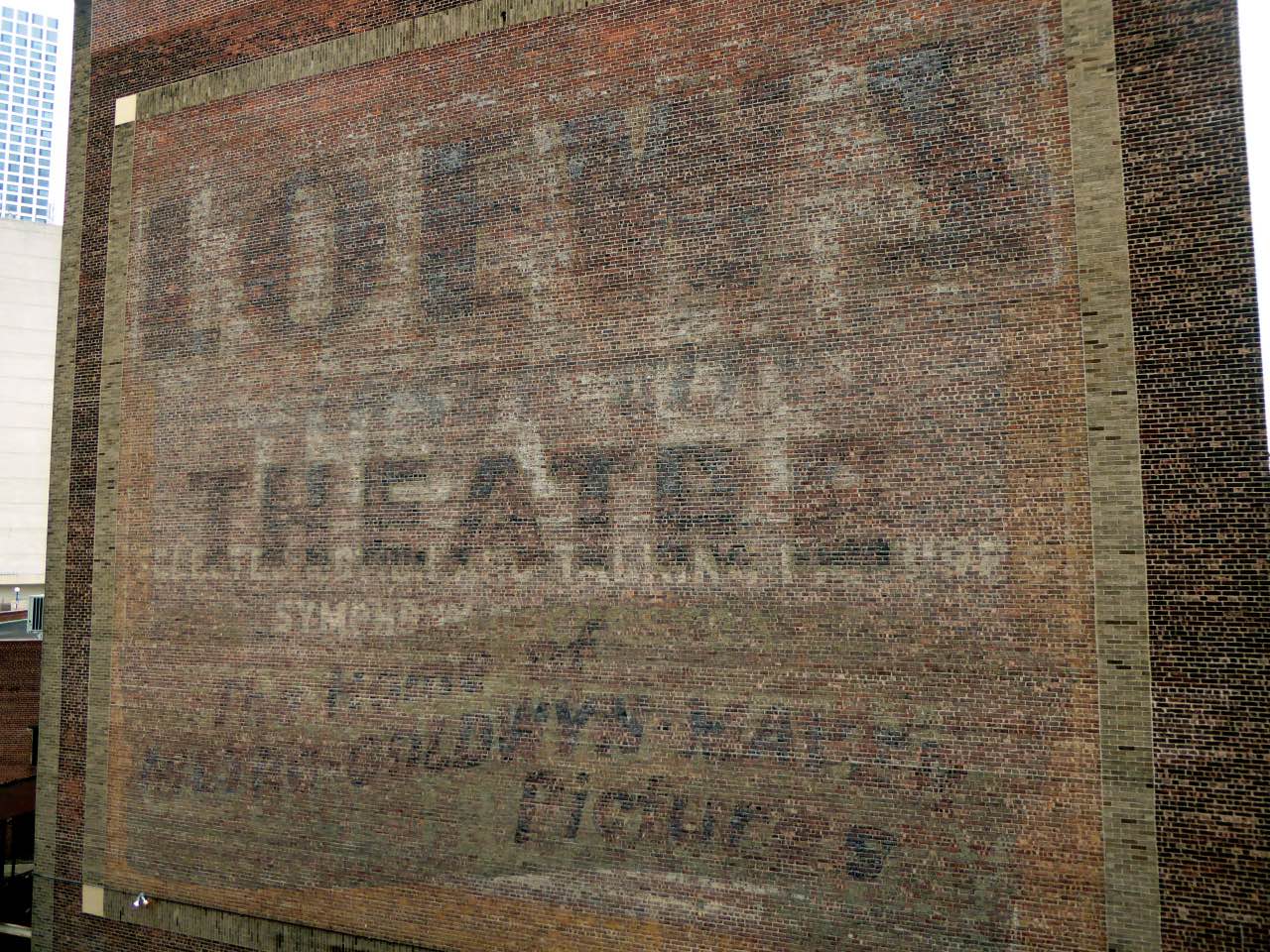
In Journal Square, one of the largest theatres in the region built during the early 20th century still stands across from the PATH station and bus terminal. Completed in the fall of 1929 just a month before the stock market crash, millions of people have seen the front of the Loew’s Jersey City in the decades since, and hundreds of thousands have seen a show from one of the 3,021 seats inside.
However, what many have not seen is the massive ghost sign on the rear of the building, which can best be viewed from the top of the parking garage behind it. Although some of the text is difficult to read, the words ‘Loew’s Theatre’ and ‘The Home of Metro–Goldwyn–Mayer Pictures’ can still be seen.
Ward’s Tip Top Bread
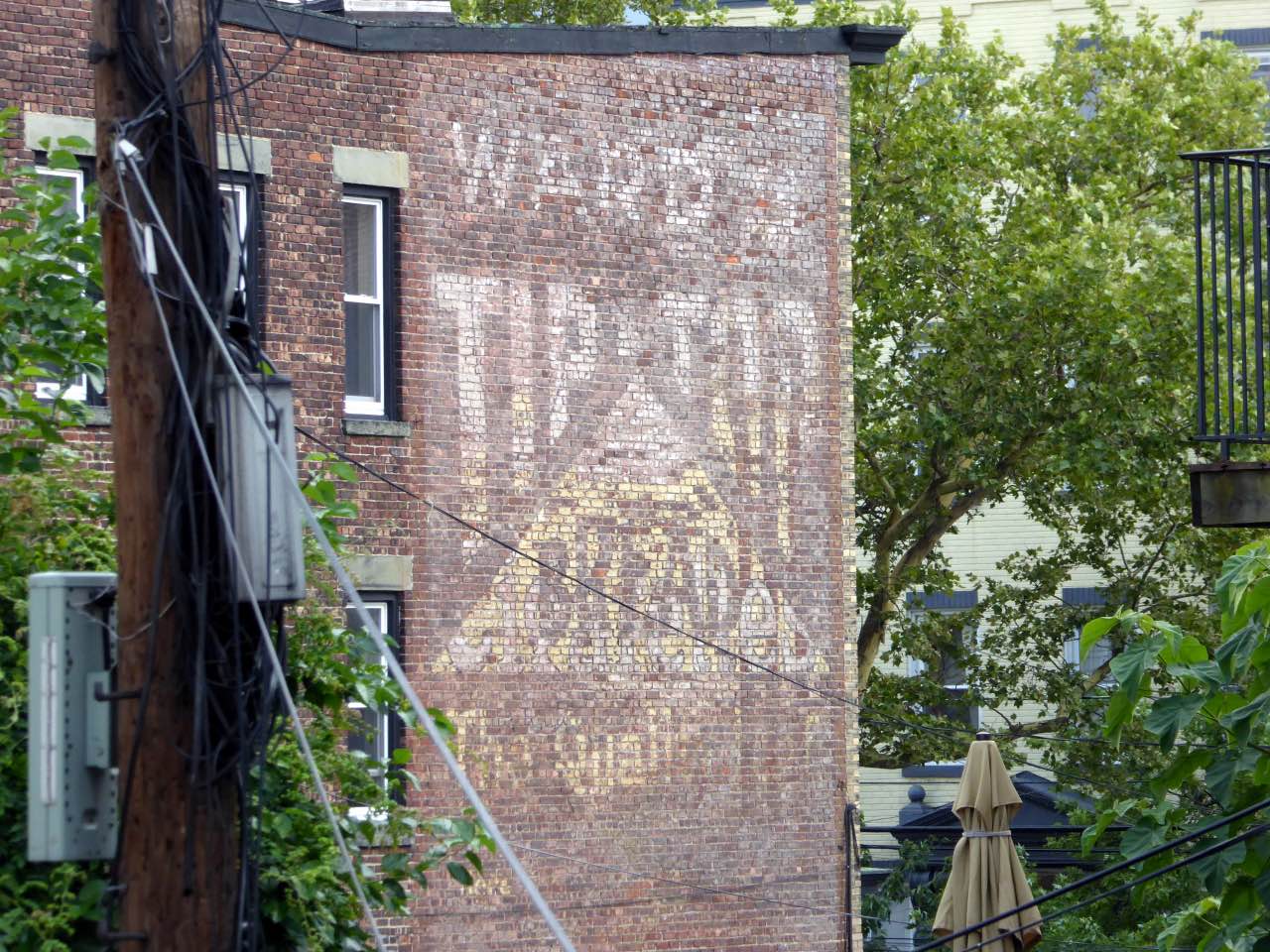
At one of the highest points in The Heights neighborhood of Ward C lies one of the neighborhoods few ghost signs. Located at the side of a residential building on Booraem Avenue, just east of Central Avenue, is a vintage advertisement possibly dating back over a century reading ‘Ward’s Tip-Top Bread’, referring to a bread brand sold across the New York area in the early 20th century. This photo shows a view of the sign from the Jersey Digs newsroom. The word ‘enriched’ can also be seen on the sign since that was how the bread was marketed throughout the brand’s history.
George S. Ward, the president of the Ward Baking Company, told a crowd of fellow bakers in 1916 that “simultaneous with the opening of our bakeries, there began to appear throughout the city on corner walls of buildings and billboards, huge painted signs advertising Ward’s Tip-Top Bread,” adding that “we used at least four hundred of these outdoor displays and they were a strong feature of our campaign,” according to a subsequent issue of the Baker’s Review.
The company operated several bakeries, including in Manhattan, Brooklyn, and on the East Orange/Newark border, and according to Ward’s 1920 report called ‘Bread Facts’, “every loaf was delivered in electric motor vehicles driven by clean cut, healthy salesmen, uniformed and gloved in white,” which was quite unique at the time. The East Orange/Newark plant, according to the Stockton School blog, could reportedly produce 120,000 loaves in ten hours when it opened in 1916.
Today, it contains the Bakery Village apartments. Eventually, the company evolved into Continental Baking, according to the Ward Baking historical site, and later introduced products like Hostess Twinkies.
Uneeda Biscuit
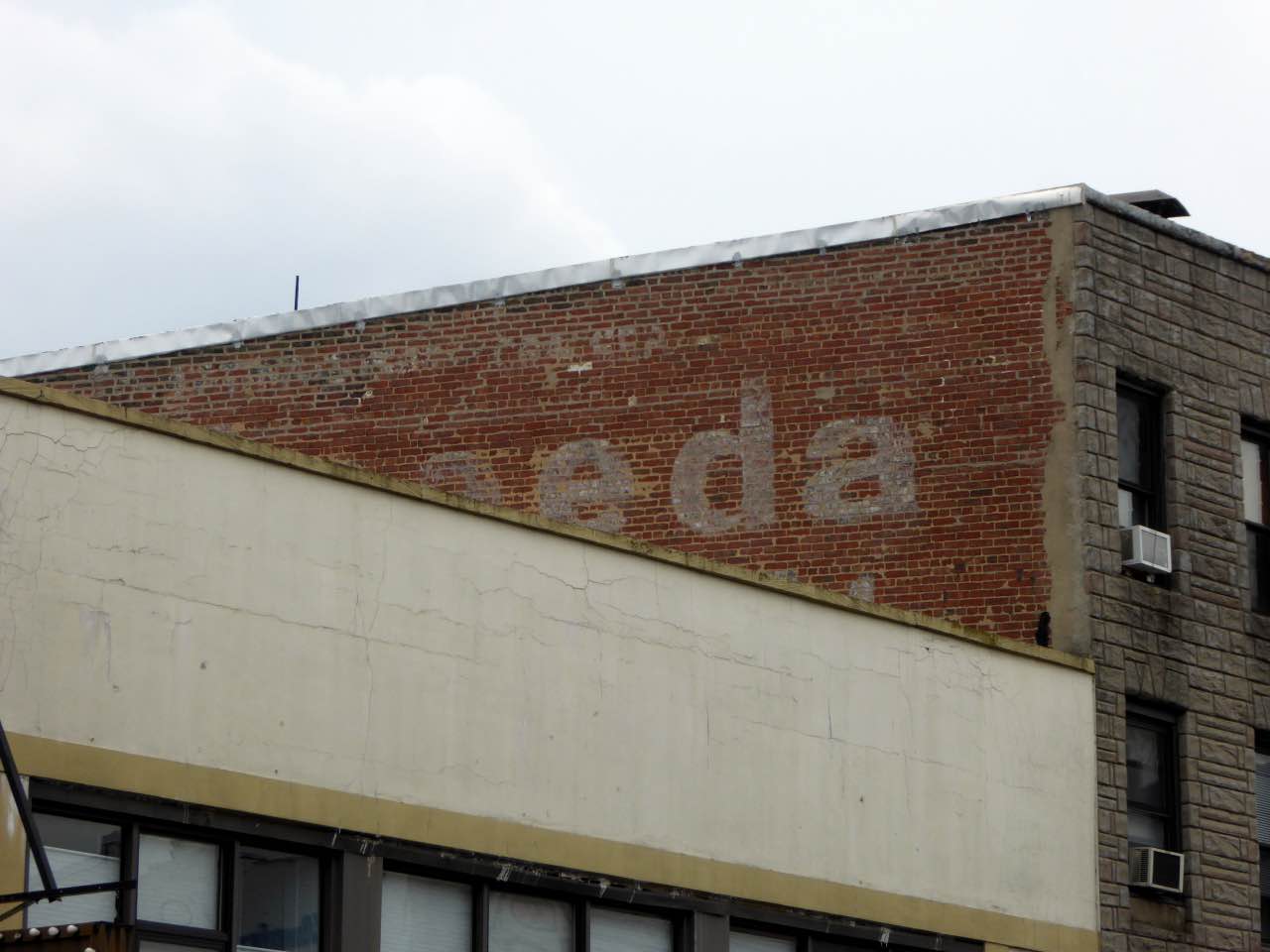
Jersey City is home to one of the country’s most common ghost signs, though it can only be seen in its entirety from the air. Although from the corner of Newark Avenue and Bay Street, the letters ‘eda’ can be seen atop 185 Newark Avenue, the sign actually reads ‘Uneeda Biscuit’, an ad for the brand of crackers sold by Nabisco beginning at the turn of the 20th century.
According to Duke University, Uneeda “was the subject of the company’s first million-dollar advertising campaign,” and remnants of that campaign can still be seen in cities and small towns nationwide in the form of ghost signs, from Albany, New York to Clarksville, Tennessee to right here in Jersey City.
Flegenheimer Brothers
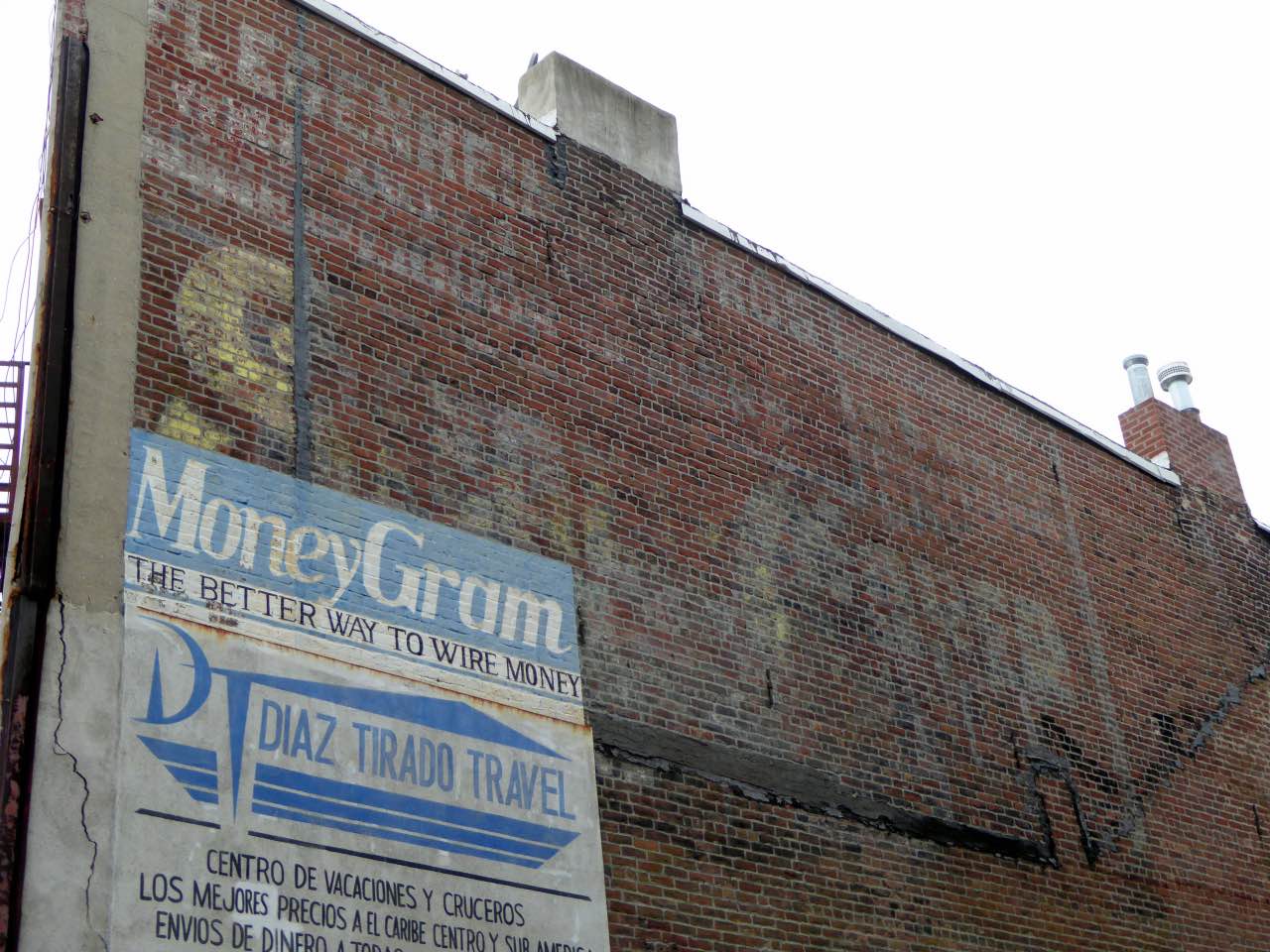
Although it is difficult to read, there is a ghost sign on the side of 176 Newark Avenue, at the corner of Bay Street, that appears to advertise multiple businesses. One of the signs reads ‘Flegenheimer Bros’, a reference to the business called Flegenheimer Brothers that once operated inside the building.
According to a journal called ‘Money’ from 1902, the business was a liquor store founded by Adolph Flegenheimer and his wife Johanna Flegenheimer, along with Emil Herz and Leo Herz, both of whom were relatives of Johanna. According to the website of Epicurean Wines, whose founder, Benjamin Hammerschlag, is a descendant of a member of the Flegenheimer family, the Flegenheimers were “a well-known, thriving, pre-Prohibition family enterprise with several locations throughout the greater New York area,” and “the business was established in 1876 and was still flourishing in 1919 when the manufacture, transportation, and sale of alcoholic beverages was outlawed in the United States.”
A photo of how 176 Newark Avenue looked a century ago can be seen on the website, along with an old flyer advertising that there were Flegenheimer stores in Manhattan, Brooklyn, Newark, Hoboken, Mount Vernon, and Yonkers. Epicurean Wines now has a brand named Flegenheimer Bros in honor of the old business.
